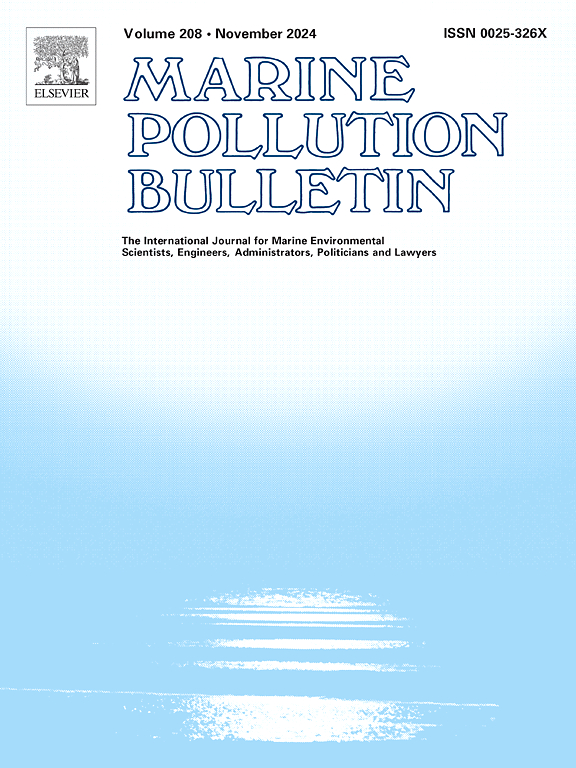Marine litter in the deepest site of the Mediterranean Sea
IF 5.3
3区 环境科学与生态学
Q1 ENVIRONMENTAL SCIENCES
引用次数: 0
Abstract
From the scientific viewpoint, the deepest ocean includes the least known regions on Earth. Advanced technologies, complex logistics and very specific expertise, requiring adequate funding, are needed for in situ observation of the deep sea. In this paper we present the results of the inspection of the floor of the deepest site in the Mediterranean Sea, the 5122 m in depth Calypso Deep in the Ionian Sea, with the Human Occupied Vehicle (HOV) Limiting Factor by Caladan Oceanic in 2020. The dive videos show the floor of the Calypso Deep littered by anthropogenic debris, with litter concentrations among the highest ever recorded in a deep sea environment. The dominant litter category by material type is plastics, accounting for 88 % of the identified litter items. No interactions have been found between litter and the rare life forms identified so far in the deep Ionian Sea. This illustrates that the deep sea is often a final sink for pollution and as such deserves more attention on associated processes and impacts. Harmonized monitoring and assessment should include the deep sea areas in order to enable efficient mitigation. Our findings provide a strong argument in favour of the urgent implementation at global scale of policy actions to reduce ocean littering thus easing the conservation of unique marine habitats, including the deepest on Earth. Our results also appeal to the society at large in terms of consumption habits, waste reduction, care of the environment and the pressing need for action to protect our ocean.求助全文
约1分钟内获得全文
求助全文
来源期刊

Marine pollution bulletin
环境科学-海洋与淡水生物学
CiteScore
10.20
自引率
15.50%
发文量
1077
审稿时长
68 days
期刊介绍:
Marine Pollution Bulletin is concerned with the rational use of maritime and marine resources in estuaries, the seas and oceans, as well as with documenting marine pollution and introducing new forms of measurement and analysis. A wide range of topics are discussed as news, comment, reviews and research reports, not only on effluent disposal and pollution control, but also on the management, economic aspects and protection of the marine environment in general.
 求助内容:
求助内容: 应助结果提醒方式:
应助结果提醒方式:


